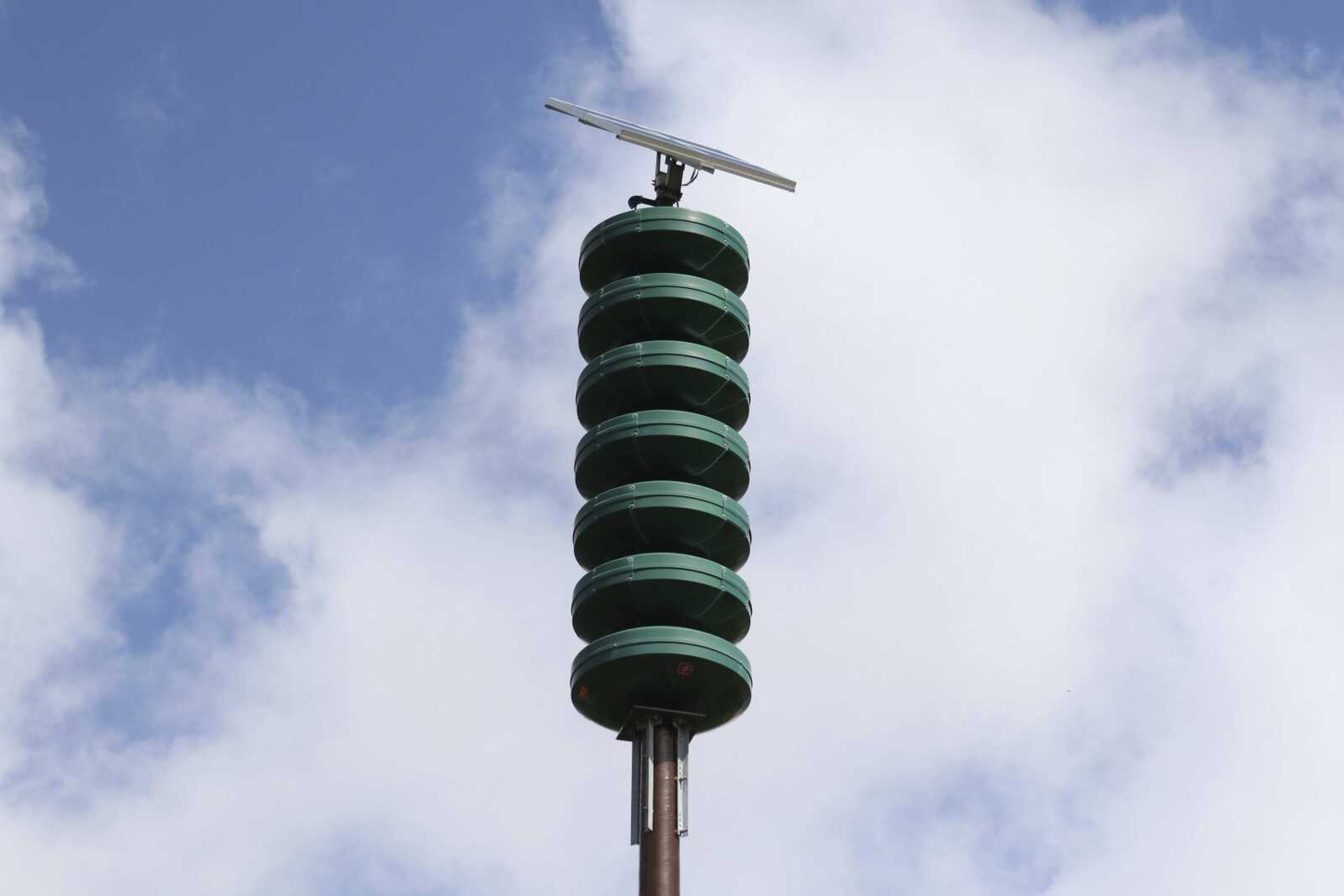Attack siren blares in Hawaii for first time since Cold War
HONOLULU -- A siren blared across Hawaii on Friday for the first time since the end of the Cold War in an effort to prepare tourists and residents for a possible nuclear attack from North Korea. The state is the first to bring back the Cold War-era warning system, Hawaii emergency management officials said. The wailing siren sounded for a minute after the usual testing of the steady alert for tsunamis and other natural disasters Hawaii residents are used to hearing...
HONOLULU -- A siren blared across Hawaii on Friday for the first time since the end of the Cold War in an effort to prepare tourists and residents for a possible nuclear attack from North Korea.
The state is the first to bring back the Cold War-era warning system, Hawaii emergency management officials said. The wailing siren sounded for a minute after the usual testing of the steady alert for tsunamis and other natural disasters Hawaii residents are used to hearing.
Emergency officials, like they do after every monthly test, were gathering information about whether any sirens malfunctioned or were too soft, said Vern Miyagi, administrator of the Hawaii Emergency Management Agency.
There was little reaction from people on Waikiki Beach, where the test sounded like a distant siren.
"I was out in the ocean playing around, and I heard this siren," said tourist Tom Passmore from Calgary, Canada, adding he didn't think much of it. "I think it's a good idea," he said of the test, "but judging by everyone's reaction around here nobody moved."
The possibility of a strike is remote, but it's important to be prepared, Gov. David Ige said this week.
Ige said the new test will ensure the public knows what they should do in case of an imminent attack. If a missile is launched, residents and tourists would have less than 20 minutes to take shelter, officials said.
The state delayed the test for a month to let people know it would be happening, Miyagi said. Hawaii turned to public-service announcements on TV and radio, town-hall meetings, information on agency websites and media stories.
Honolulu resident Mark Valdez was taking a walk in Ala Moana Beach Park during the test. He said he's heard some information about the test, but "I wouldn't know what to do" if there was an emergency.
Nearby in the park, Thomas Hanes and his wife sat in hammocks as the sirens sounded.
"We heard it quite clearly, and it was effective," he said. "I just didn't know what it was for."
The Los Angeles residents, who stopped in Hawaii on their way to Australia, hadn't heard information about the test.
"I assumed it was a test," Hanes said. "I thought if it is a nuclear missile attack, there's nothing I can do about it, so I'm just going to relax."
The test comes the same week North Korea fired a powerful nuclear-capable intercontinental ballistic missile it calls the Hwasong-15, leading analysts to conclude the nation has made a jump in its missile capability.
The weapon would have a range of more than 8,100 miles (13,000 kilometers), easily reaching the U.S. mainland.
Hawaii is one of the closest states to North Korea, and its large military presence could make it more of a target. The island of Oahu is home to U.S. Pacific Command, the military's headquarters for the Asia-Pacific region. It also hosts dozens of Navy ships at Pearl Harbor and is a key base for the Air Force, Army and Marine Corps.
Miyagi has previously said a nuclear strike on Hawaii would result in thousands of deaths, thermal radiation, severe damage to critical infrastructure and other chaos.
The tests will continue on the first business day of every month. If the siren sounds because an attack is imminent, residents and tourists should get inside and stay tuned for further instructions, officials said.
Hawaii no longer has any nuclear shelters. When the Cold War ended, funding for maintaining them ran out as the threat of attack ended.
Karen Lindsay and Carolyn Fujioka, of Honolulu, continued eating their lunch during the test after a stand-up paddleboard session in Ala Moana Beach Park.
They thought about how if this was a real emergency, there wouldn't be any time to do much.
"It's great to alert us, I guess to say our last goodbyes, which is basically all you can do," Lindsay said. "You just hope it never comes to that."
Connect with the Southeast Missourian Newsroom:
For corrections to this story or other insights for the editor, click here. To submit a letter to the editor, click here. To learn about the Southeast Missourian’s AI Policy, click here.









